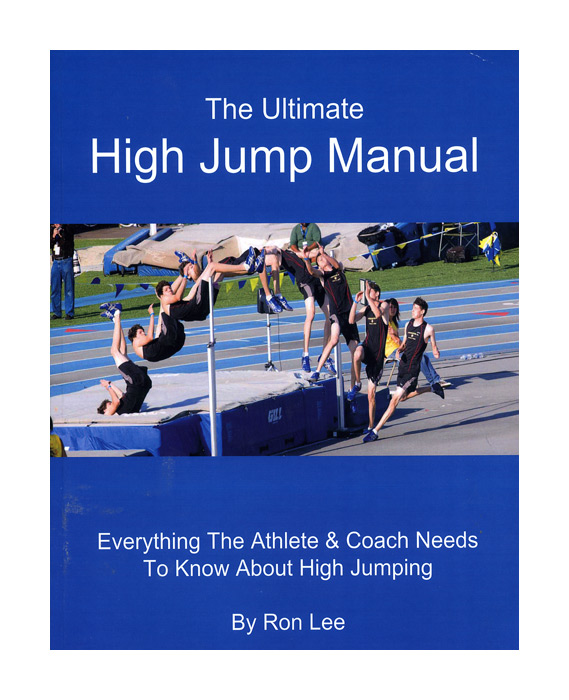Book review: ‘The Ultimate High Jump Manual’ falls short of promise
The nitty gritty:
“The Ultimate High Jump Manual: Everything The Athlete & Coach News to Know About High Jumping,” published in 2009 by Mavron LLC of Mission Viejo, California; 148 pages, softcover; $24.95 cover price; 22.4×27.5 cm (almost 8 1/2×11 inches)
Organization:
Eight sections (“High jump rules,” “Technical discussion of the high jump,” “High jump training,” etc.)
Who this book is for:
High jumpers and their coaches. Plus helicopter parents who want to undercut the authority of their kid’s coaches. (Kidding.)
What I liked:
This book is plainly written, easy to understand. It slices and dices the flop every way imaginable and offers tips for beginners through experts. Ron writes: “If I would have known back then (when he was a kid) what I know now, the sky would have been the limit.” So he wrote the book, perhaps wondering how much higher he would have gone than his PR of 2.18 (7-2). He’s cleared 2.01 (6-7) in masters. A section on rules includes “Special rules for masters competitors.” One section is devoted to “Common errors, causes and how to correct them,” and of course he has lots of substantive training and strength tips.
What I didn’t like:
Ron includes a couple dozen black-and-white charts. Some use stick figures to depict the jumper, though. That’s lame. No color photos, and the few photos used are mostly smallish. Of course, the best photo in the book is a sequence showing his star pupil, Harrison Steed, who could go 7-4 before his prep career is over. Despite the crucial importance of mental outlook, Ron gives short shrift to this aspect of jumping. “The mental side of the high jump” covers a page and basically amounts to “stay positive” and go on “automatic pilot” — not dwelling on technical aspects that should have been mastered in practice. Ron writes: “The jumper should clear his mind before an attempt and just jump.” Wish it were that simple.
Sample from Section 6: “Competition strategies”
In Masters track, a jumper that has passed three consecutive heights after the competition starts may be permitted a warm-up jump without the crossbar. One warm-up may be allowed for every three passed heights. When in doubt, ask the official for a run-through or practice jump before the crossbar is raised to a new height. . . . . Another option for long delays between the initial warm-up period and the preferred opening height is to measure the approach during the normal warm-up period, but not warm up yet. The jumper will then begin the competition one or two heights below his normal starting height (i.e., start low). The jumper should ask the official for a practice jump without the crossbar before his first attempt in competition. The jumper can use this as a practice run-through or practice jump. The jumper will then use the lower height jumps as the warm-up jumps.
Bottom line:
Books that focus exclusively on the flop are few. And ones that even mention “masters” are rarer still. Usually, the best you can do is read a chapter on the high jump in a much larger (and more expensive) coaching tome. So Ron’s book is welcome and recommended. Despite the overambitious title, “The Ultimate High Jump Manual” is a worthy addition to the genre. But next time call it “Ron Lee’s Most Excellent High Jump Book.”






2 Responses
“(…) Ron writes: “It is rare to find a high jumper that does not use (the flop). Therefore this book will only discuss the flop technique.” (Just don’t tell masters straddlers like Bill Murray, Charlie Rader, John Dobroth, Phil Fehlen, Willie Banks, Jason Meisler, Dave Perry (…)”
and don’t tell “the” master straddler THOMAS ZACHARIAS!!!
i am soooo offended 🙂
Milan
Leave a Reply